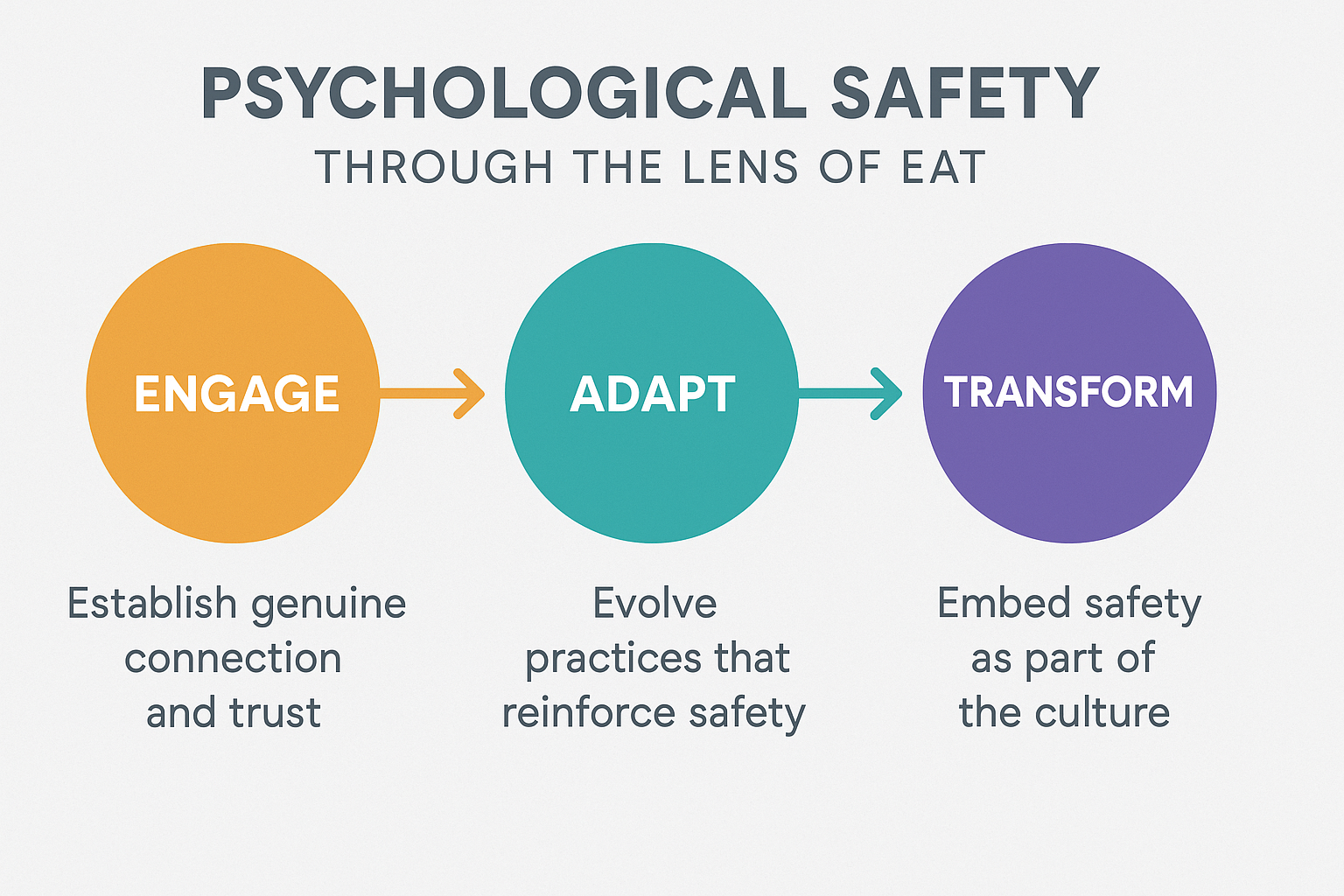Authenticity begins with self-knowledge, but it shows up as what people can see you do:
As I explain, “Authenticity is more than being true to yourself… an authentic leader is also attuned to the needs and emotions of others.” In other words, focus on actively listening, reflecting back what you’ve heard, and making support visible. These behaviors help create psychological safety and deeper engagement, rather than performative “openness.”
Transparency is the second pillar. Young leaders often ask, “How transparent is too transparent?” My answer: default to clarity about what you know, what you don’t, and when you’ll update. Authentic leaders don’t hide behind a veil of secrecy…transparency builds trust. Direct communication—even about sensitive issues—isn’t cruelty; it’s respect. I profile leaders who “address the elephants in the room,” modeling candor as a cultural norm.
“Authentic leaders don’t hide behind a veil of secrecy… transparency builds trust.”
Empathy is the third pillar. Leaders who name the burden on others, provide resources, and stay present reduce stress and raise engagement. In my resilience writing, we show how authentic communication and empathy foster trust and psychological safety, particularly during uncertainty—conditions under which teams don’t merely endure; they improve.
Train for communication behaviors, not performances
If we want fewer bad bosses, we have to stop training leaders to perform persona and start training them to practice presence. That shift is concrete:
Open with a value sentence (“We’re prioritizing quality over speed to protect customer safety”)
Acknowledge human impact before directives
Explain why in plain language: state what’s known/unknown and the next update time
Invite dissent on purpose; thank the first tough question
Close loops in public: what changed (or didn’t) because of feedback
These are teachable moves that convert empathy and integrity into felt experience. The result is creation of a culture people can trust.
Two simple mental models (not another 300-slide deck)
When I train young leaders, I give them two scaffolds they can remember under pressure:
The EAT Model (Engage → Adapt → Transform) is a process lens: first win attention and belief (Engage), then iterate message/channel/rituals from real feedback, both for yourself as a leader and audiences/people you engage with (Adapt), and finally prove change with policies, cadences, and evidence (Transform). I developed EAT initially to explain how culture works—not as a “thing,” but as a process people experience and reshape. That verb-like quality helps leaders design communication people actually ingest and use.
The 6-M Communication Model (Mindset, Message, Medium, Mechanisms, Membership, Measurement) is a design checklist. Mindset puts values and ethics first; Message clarifies framing and story; Medium matches channel to intent; Mechanisms turn words into repeatable routines; Membership ensures real voice and dissent; Measurement shows salience, sentiment, behavior, and trust. Use it every time there’s a stake. It prevents “clever-but-unethical” campaigns, message theater without follow-through, and “change” with no proof.
Together, these models keep young leaders from improvising charisma and instead coach them to sequence change and design communication so people experience respect, clarity, and steadiness.
Why so many programs fail (and how to build ones that don’t)
We create toxic managers when we reward optics over outcomes and charisma over care. Many curricula skip the part where leaders have to show up consistently and make support tangible. In our leadership development at Workplace Options, we emphasized that safety and engagement require cadence, boundaries, and human connection—not slogans. Leaders who model clarity, encourage balance, and keep conversation channels open cultivate resilience rather than burnout.
We create toxic managers when we reward optics over outcomes and charisma over care.
For young leaders, the path forward is clear: treat authenticity as a daily discipline. Write the value sentence first. Be honest about uncertainty. Make empathy visible. Discuss and publicize what changed because people spoke up. Do these things, repeatedly, and the culture will begin to mirror the leader.
A better beginning
The future doesn’t need more boss-shaped performances. We need leaders who communicate with courage, clarity, and care. If you’re training the next generation—or becoming it—start with the practices I outline here and in The Authentic Leader. We want to help leaders develop skills that are short on theatrics and long on results: Lead with empathy…actively listen…create a safe space for authenticity to flourish.
The future doesn’t need more boss-shaped performances; it needs leaders who communicate with courage, clarity, and care.
If this resonates, consider picking up a copy of The Authentic Leader. And, if you want to put these ideas into action, pick one communication this week and run it through these behaviors, particularly the EAT Model and the 6-M checklist. Remember: the only leadership that works is the kind people can feel.







